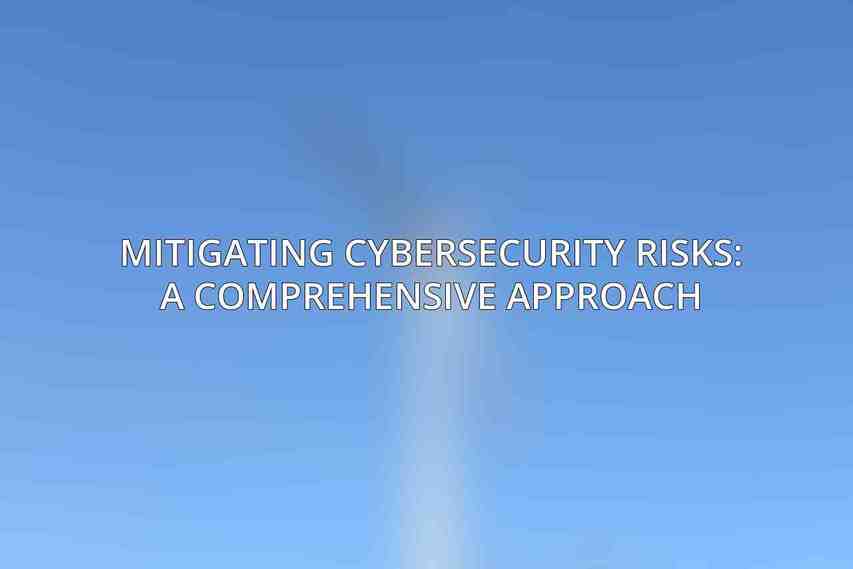The year 2024 presents businesses with a myriad of challenges and risks that demand proactive measures to safeguard sensitive data and operations. as technology advances, so do the tactics and strategies employed by cyber attackers. Understanding the emerging threats on the horizon is crucial for organizations to fortify their defenses and mitigate potential breaches.
Evolving Cybersecurity Landscape: A Prelude to 2024 Threats
Shifting Threat Vectors: From Traditional to Sophisticated Attacks
Cyber threats have evolved from simple malware attacks to sophisticated threats like advanced persistent threats (APTs) and zero-day exploits. Hackers are continuously innovating their techniques to bypass traditional security measures, making it vital for businesses to stay vigilant against these evolving threats.
Heightened Connectivity and IoT Proliferation
The proliferation of Internet of Things (IoT) devices has expanded the attack surface for cybercriminals. With the increasing interconnectivity of devices, businesses face new vulnerabilities that can be exploited to gain unauthorized access to critical systems and data.
Workforce Mobility and Remote Work Implications
The shift towards remote work has introduced new security challenges, including securing remote access, protecting endpoint devices, and ensuring secure communication channels. The blending of personal and corporate devices further complicates the security world for organizations.
Emerging Threats to Watch Out for in 2024

Ransomware Evolution: Double Extortion and Ransomware-as-a-Service
Ransomware attacks have evolved to include double extortion tactics, where threat actors not only encrypt data but also threaten to leak sensitive information. The rise of Ransomware-as-a-Service (RaaS) has lowered the barrier to entry for cybercriminals, leading to an increase in ransomware incidents across various industries.
| 1. Latest Variants and Tactics | 2. New Targets and Industries Affected | 3. Rising Costs and Impact on Business Operations |
|---|---|---|
– Maze Ransomware | – Healthcare and Learn more about How to Implement Firewalls for Business Security | – Financial Losses from Ransom Payments |
– Conti Ransomware | – Critical Infrastructure | – Operational Disruption and Downtime |
– DarkSide Ransomware | – Manufacturing | – Reputational Damage and Legal Consequences |
Supply Chain Attacks: Targeting the Weakest Link
Targeting vulnerabilities in the supply chain has gained traction among cybercriminals as a means to infiltrate organizations indirectly. By compromising third-party vendors and software, attackers can breach well-defended networks through these interconnected relationships.
Cloud Misconfigurations: A Growing Vulnerability
Misconfigurations in cloud environments remain a prevalent risk for businesses leveraging cloud services. Common misconfigurations, such as exposed storage buckets and improper access controls, can result in data leaks and unauthorized access to cloud resources.
Phishing and Social Engineering Techniques
Phishing attacks continue to be a primary method for threat actors to deceive individuals into disclosing sensitive information. Spear phishing, vishing (voice phishing), and business email compromise (BEC) are among the sophisticated techniques used to bypass traditional email filters and target specific employees within organizations.
Insider Threats: A Hidden Danger Within
Insider threats pose a significant risk to businesses, as malicious or negligent insiders can exploit their access privileges to steal data, sabotage systems, or facilitate external attacks. Understanding the motivations and behavioral indicators of insider threats is essential for implementing effective mitigation strategies.
Artificial Intelligence (AI) and Machine Learning (ML) in Cybersecurity
The adoption of AI and ML technologies in cybersecurity has enhanced threat detection capabilities, enabling organizations to detect and respond to cyber threats in real-time. However, the use of AI/ML also introduces new challenges related to bias, transparency, and adversarial attacks that require careful consideration.
Mitigating Cybersecurity Risks: A Comprehensive Approach

Implementing a Cybersecurity Framework and Best Practices
Adhering to industry standards and regulations, developing an incident response plan, and conducting regular risk assessments are foundational steps in establishing a robust cybersecurity posture. Compliance with frameworks like NIST Cybersecurity Framework or ISO 27001 helps organizations align their security practices with industry best practices.
Strengthening Network Security Measures
Deploying Next-Generation Firewalls (NGFWs), utilizing Intrusion Detection and Prevention Systems (IDPSs), and implementing network segmentation are key components of network security that help organizations detect and prevent unauthorized access and malicious activities.
Enhancing Endpoint Protection
Protecting endpoints with antivirus and anti-malware software, enabling Two-Factor Authentication (2FA), and leveraging User and Entity Behavior Analytics (UEBA) tools enhance the security of devices and prevent unauthorized access to sensitive data.
Training and Awareness Programs for Employees
Educating employees on cybersecurity best practices through phishing simulations, training sessions, and regular communication fosters a culture of security awareness within the organization. Building a resilient human firewall is essential in mitigating the risks posed by social engineering attacks.
Utilizing Managed Security Services (MSS)
Outsourcing cybersecurity operations to Managed Security Service Providers (MSSPs) offers organizations access to specialized expertise, round-the-clock monitoring, and rapid incident response capabilities. MSSPs provide tailored security solutions that align with the organization’s risk profile and compliance requirements.
Conclusion: Embracing Proactive Cybersecurity
The Importance of Continuously Monitoring and Adapting
Cybersecurity is a dynamic field that requires continuous monitoring of emerging threats and proactive adaptation of security measures to mitigate evolving risks. Organizations must stay agile in their security strategies to effectively combat the ever-changing threat world.
The Future of Cybersecurity: Predictions and Emerging Trends
Looking ahead, the future of cybersecurity will likely see advancements in threat intelligence, automation, and zero-trust security models to bolster defenses against sophisticated attacks. Embracing emerging technologies and security trends will be vital for businesses to stay ahead of cyber threats.
Call to Action: Prioritizing Cybersecurity for Business Resilience
As cyber threats become more pervasive and damaging, prioritizing cybersecurity as a fundamental aspect of business resilience is imperative. Investing in comprehensive security measures, employee training, and strategic partnerships with cybersecurity experts can help organizations build a resilient defense against evolving cyber threats.
staying informed about the emerging cybersecurity threats in 2024 and adopting a proactive approach to cybersecurity are essential for businesses to safeguard their assets and maintain operational continuity in the face of evolving cyber risks. By implementing robust security measures, fostering a culture of awareness, and leveraging external expertise, organizations can navigate the complex cybersecurity world and protect themselves from potential breaches and disruptions.
Frequently Asked Questions
What are some emerging cybersecurity threats for businesses in 2024?
Some emerging cybersecurity threats for businesses in 2024 include ransomware attacks, supply chain vulnerabilities, AI-powered attacks, sophisticated phishing schemes, and cloud security risks.
How can businesses protect themselves from ransomware attacks?
Businesses can protect themselves from ransomware attacks by implementing regular data backups, using strong encryption, training employees on cybersecurity best practices, deploying anti-malware solutions, and staying informed about the latest ransomware trends.
What are supply chain vulnerabilities and how can businesses address them?
Supply chain vulnerabilities refer to weaknesses in the interconnected network of suppliers and third-party vendors that businesses rely on. To address these vulnerabilities, businesses can conduct thorough risk assessments, establish security requirements for suppliers, monitor supply chain activities, and implement secure communication channels.
What are AI-powered attacks and how can businesses defend against them?
AI-powered attacks leverage artificial intelligence and machine learning algorithms to launch sophisticated cyberattacks. Businesses can defend against these attacks by using AI-driven cybersecurity tools for threat detection and response, implementing robust authentication mechanisms, monitoring network activity for anomalies, and educating employees on the risks of AI-driven attacks.
How can businesses enhance cloud security to protect against cyber threats in 2024?
Businesses can enhance cloud security by implementing strong access controls, encrypting sensitive data in transit and at rest, conducting regular security audits and vulnerability assessments, using multi-factor authentication, and ensuring compliance with industry regulations and data protection standards.

